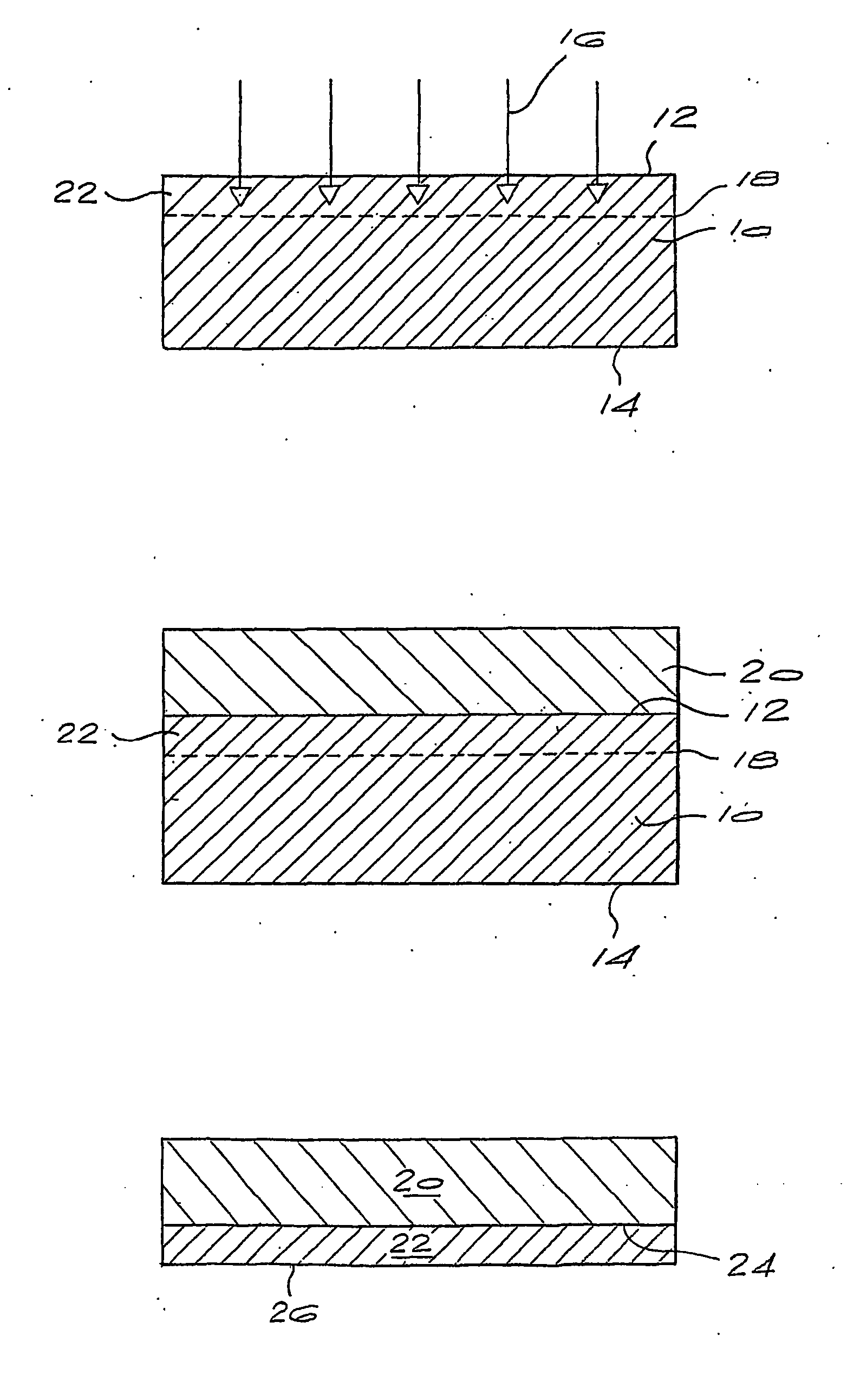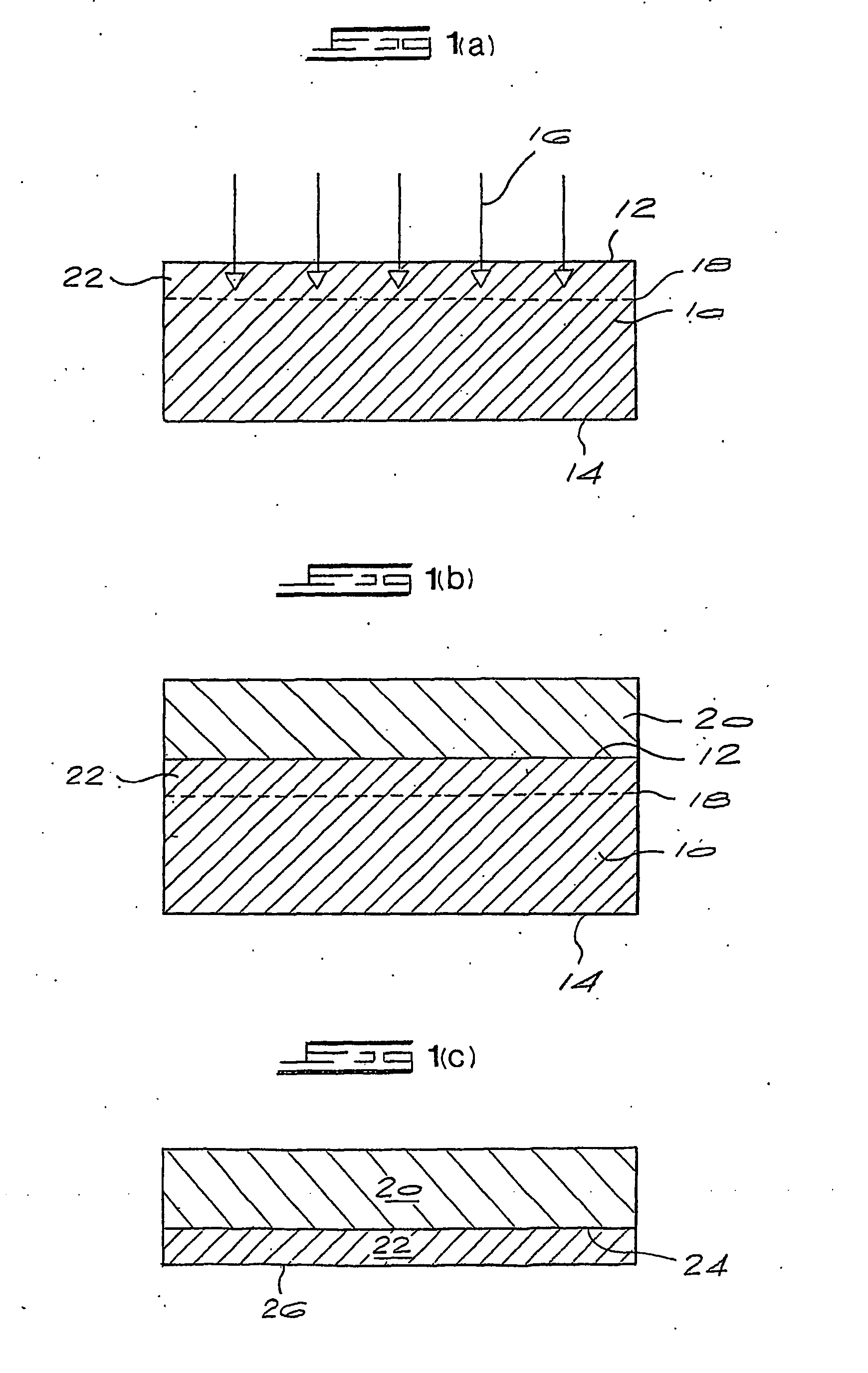Layered structures
a layer structure and structure technology, applied in the field of layer structures, can solve the problems of complex process, limited types and concentrations of ions which can be successfully implanted in diamonds, and permanent degradation of important properties, so as to reduce the amount of post-growth processing complexity.
- Summary
- Abstract
- Description
- Claims
- Application Information
AI Technical Summary
Benefits of technology
Problems solved by technology
Method used
Image
Examples
example 1
[0032] A high purity diamond substrate produced using a CVD method known in the art with thickness 600 μm, is first implanted with 2 MeV oxygen ions to a dose of 1×1017 cm−2. A thick (300 μm) boron doped single crystal CVD layer which has, as measured by SIMS, 2×1019 B atoms / cm−3 is grown on a surface of this substrate. Following growth the layered product is electrochemically etched to produce two samples: (i) a high purity diamond layer that can be reused and (ii) a two layer product consisting of a 1 μm high purity diamond layer and a 300 μm boron doped diamond layer in contact with the high purity diamond layer. This two layer product has an electronic application.
example 2
[0033] A boron doped (1×1019 cm−3) diamond substrate prepared using a CVD method with thickness 620 μm is first implanted with 2 MeV hydrogen ions to a dose of 1×1019 cm−2. A thick (300 μm) high purity single crystal CVD diamond layer is grown on to a surface of this substrate. Following growth the layered product is electrochemically etched to produce two samples: (i) a boron doped diamond plate which can be reused, and (ii) a two layer product consisting of a 10 μm boron doped diamond layer and a 300 μm high purity diamond layer. This two layer product has an electronic application.
PUM
| Property | Measurement | Unit |
|---|---|---|
| energy | aaaaa | aaaaa |
| depth | aaaaa | aaaaa |
| depth | aaaaa | aaaaa |
Abstract
Description
Claims
Application Information
 Login to View More
Login to View More - R&D
- Intellectual Property
- Life Sciences
- Materials
- Tech Scout
- Unparalleled Data Quality
- Higher Quality Content
- 60% Fewer Hallucinations
Browse by: Latest US Patents, China's latest patents, Technical Efficacy Thesaurus, Application Domain, Technology Topic, Popular Technical Reports.
© 2025 PatSnap. All rights reserved.Legal|Privacy policy|Modern Slavery Act Transparency Statement|Sitemap|About US| Contact US: help@patsnap.com


